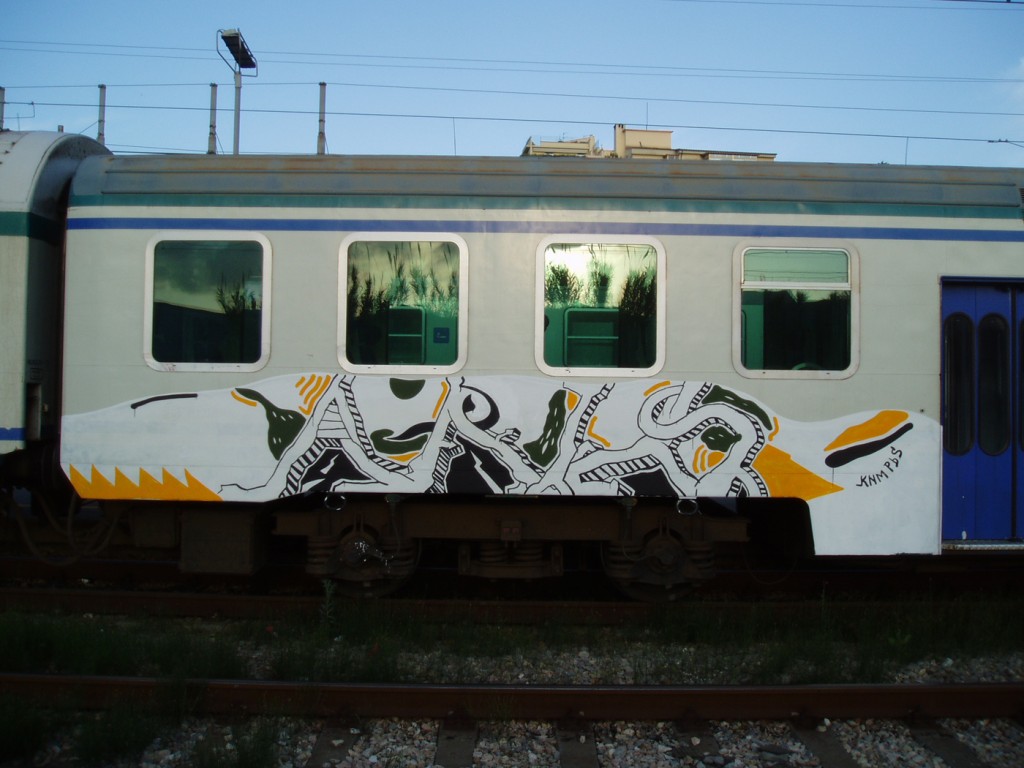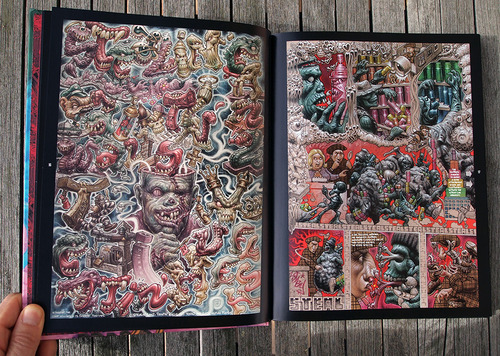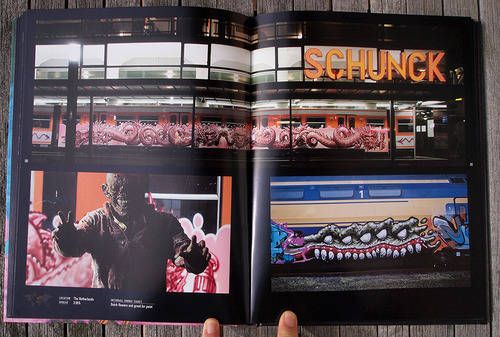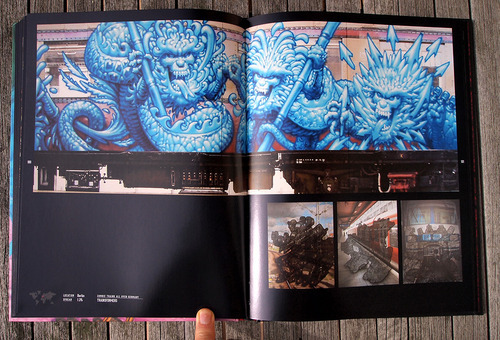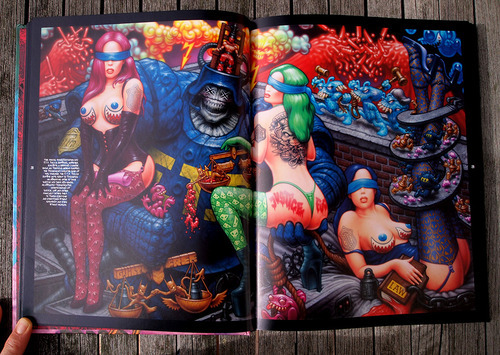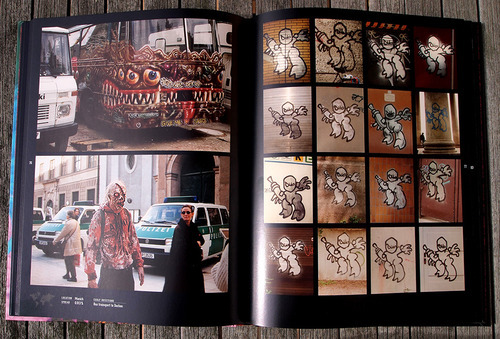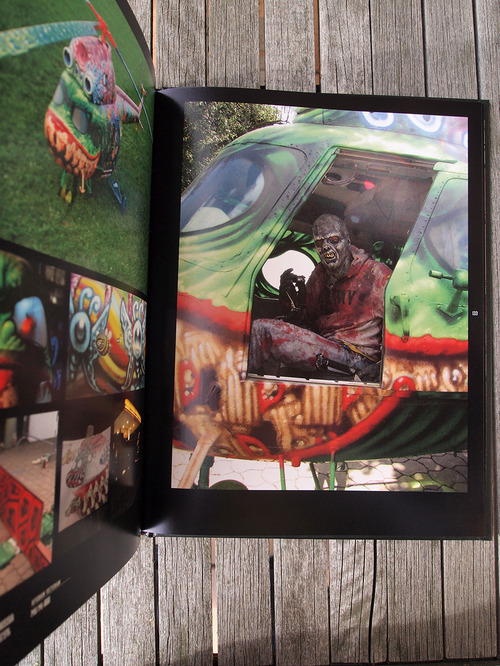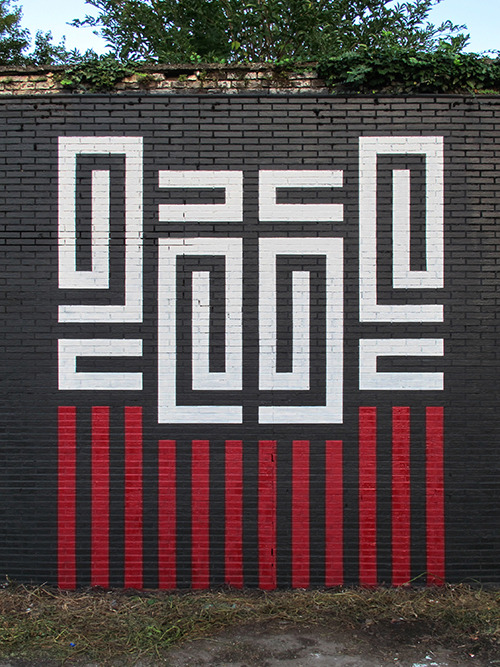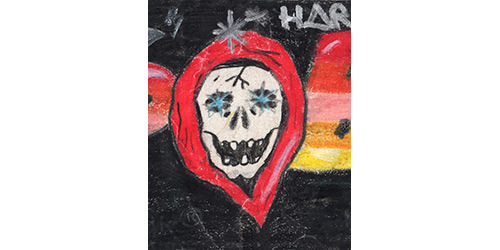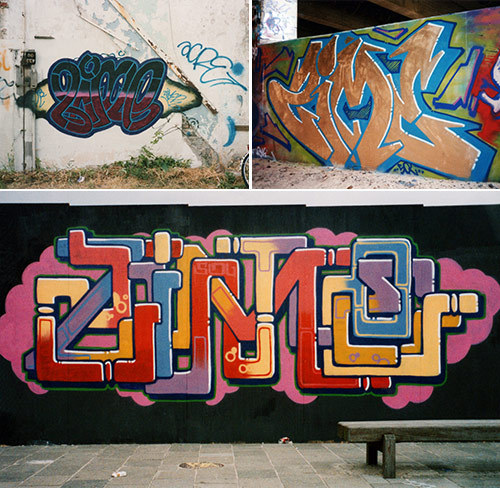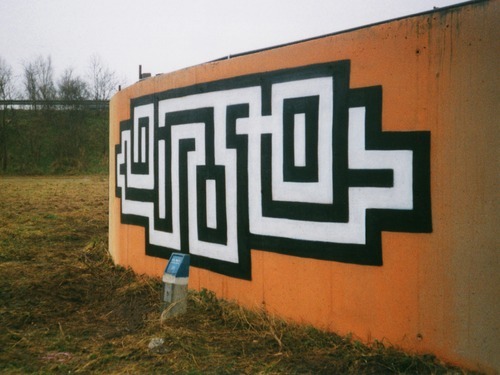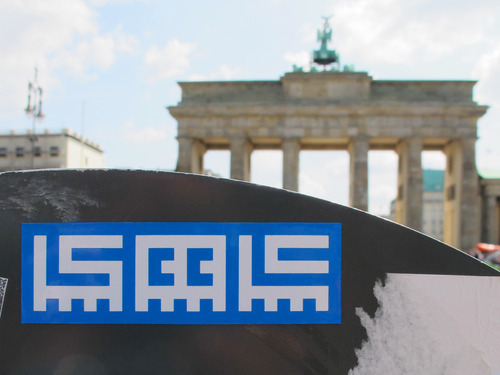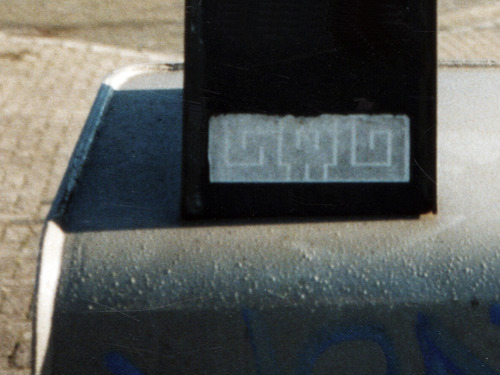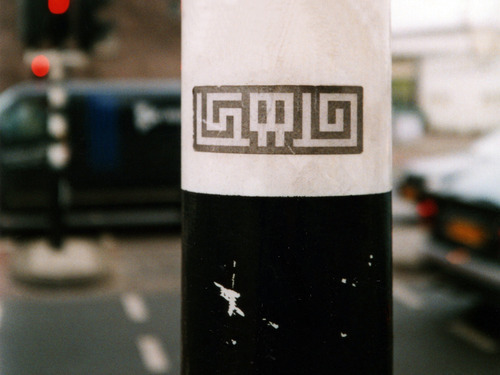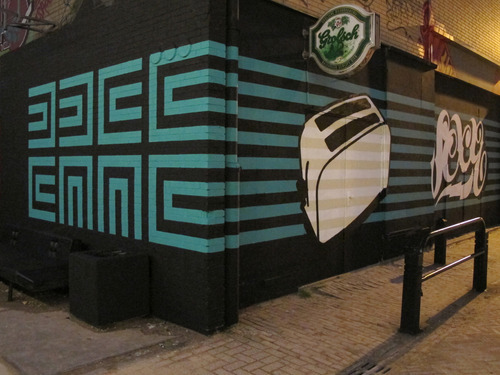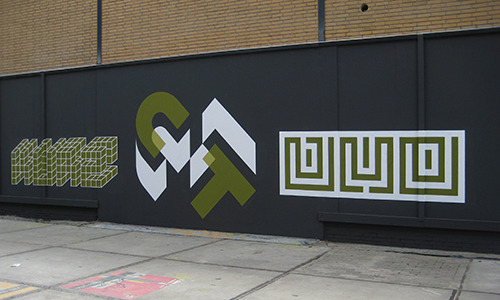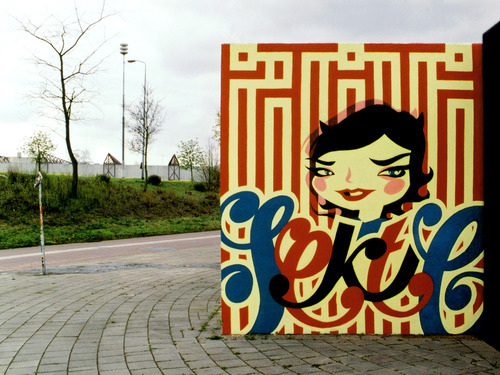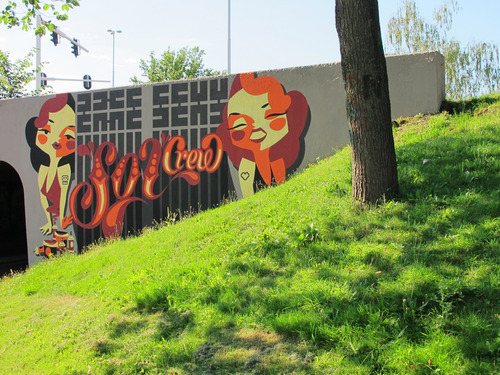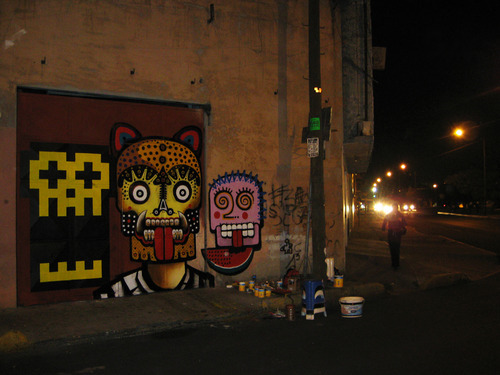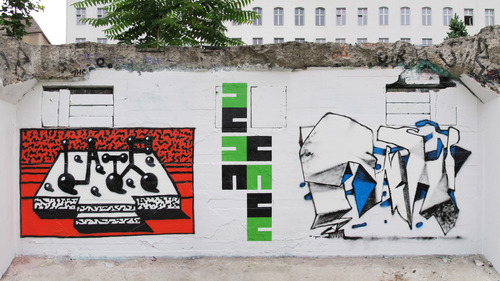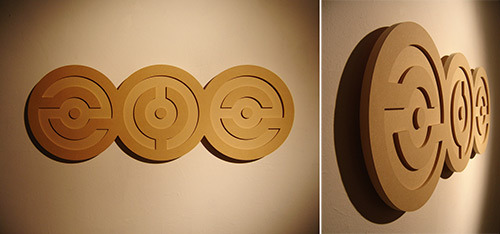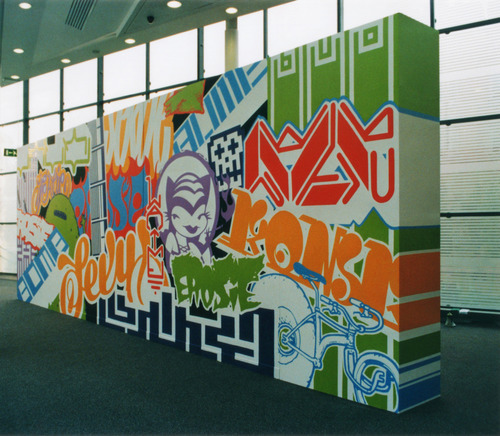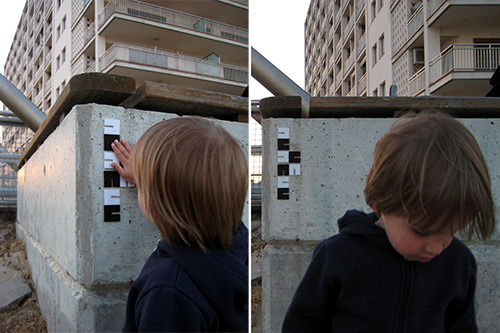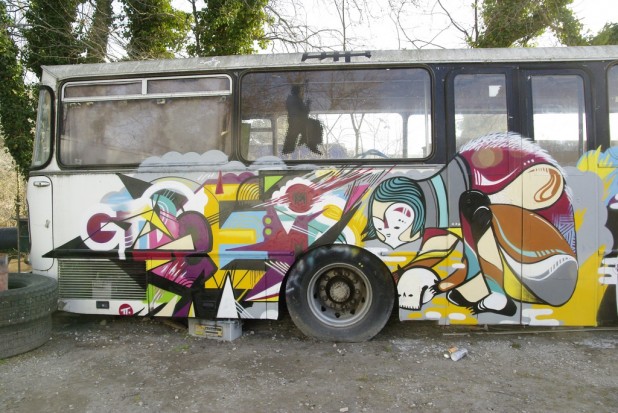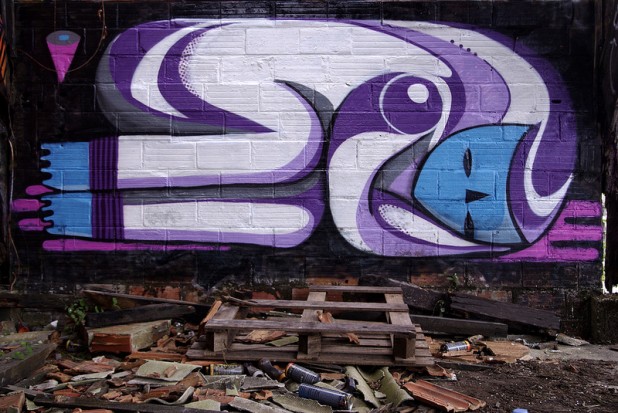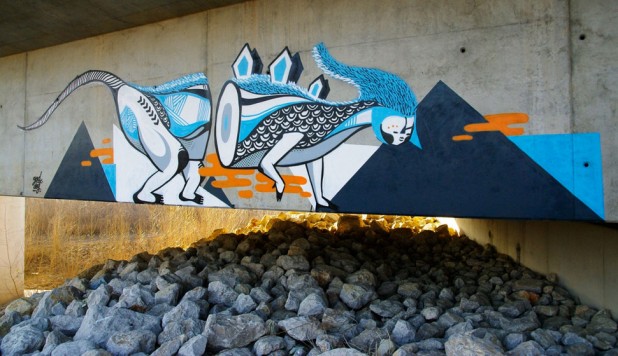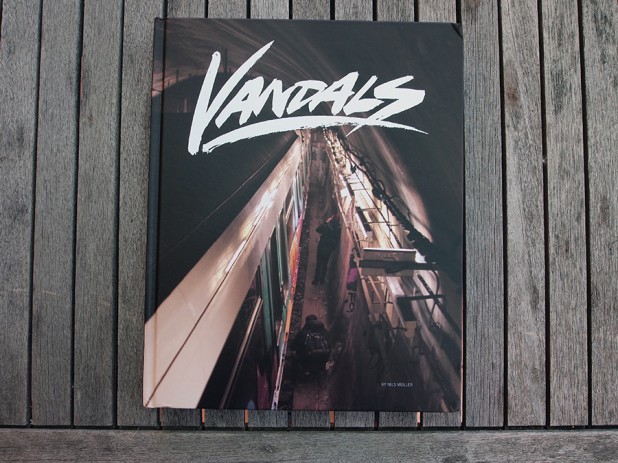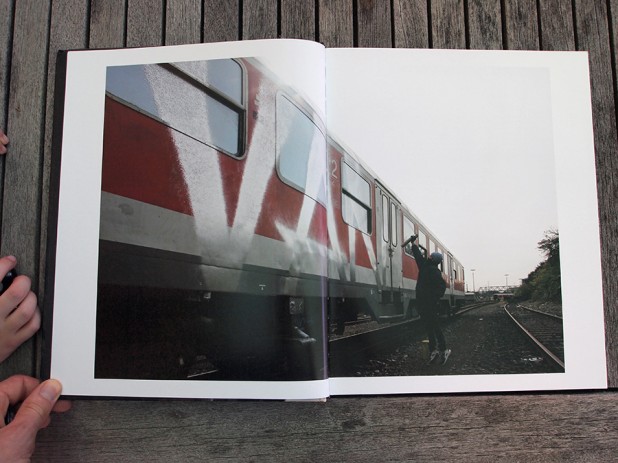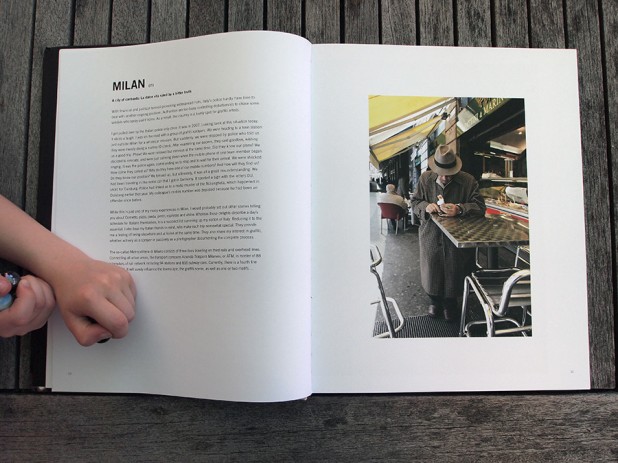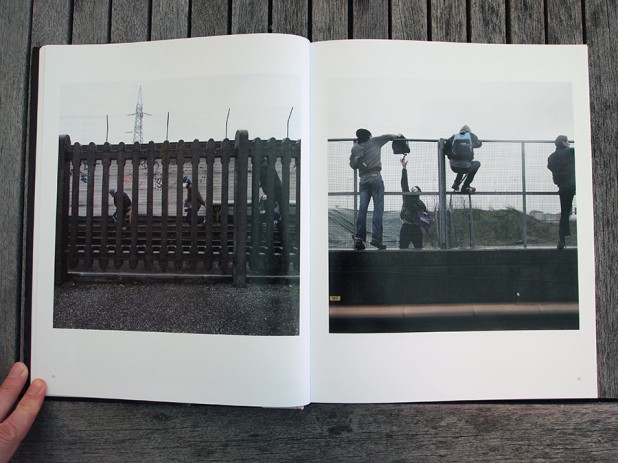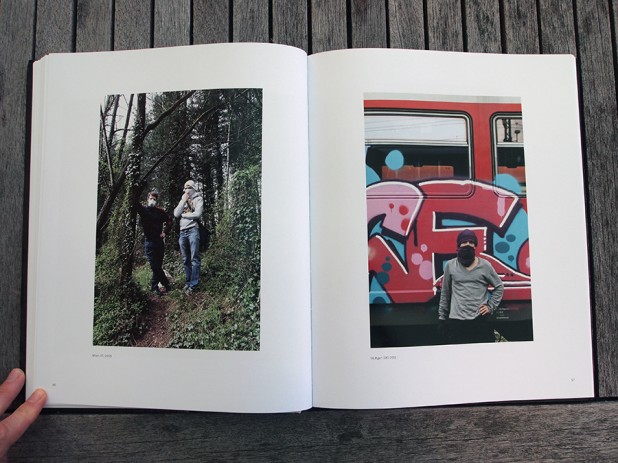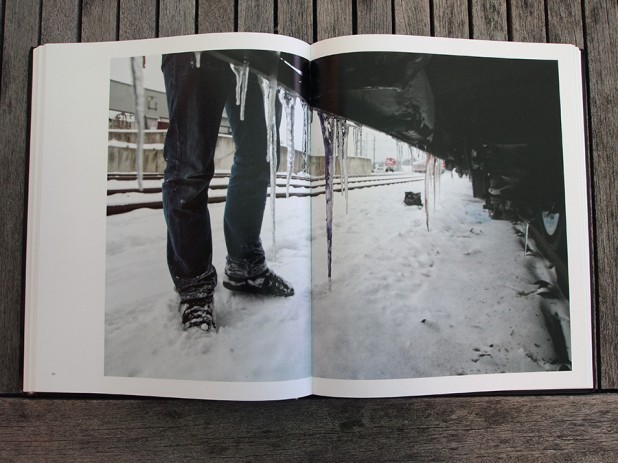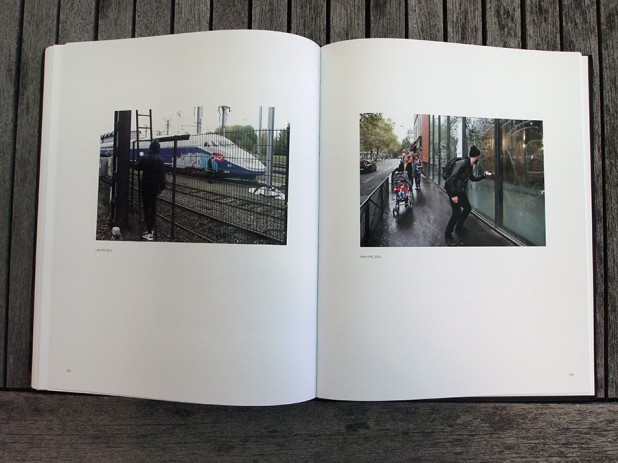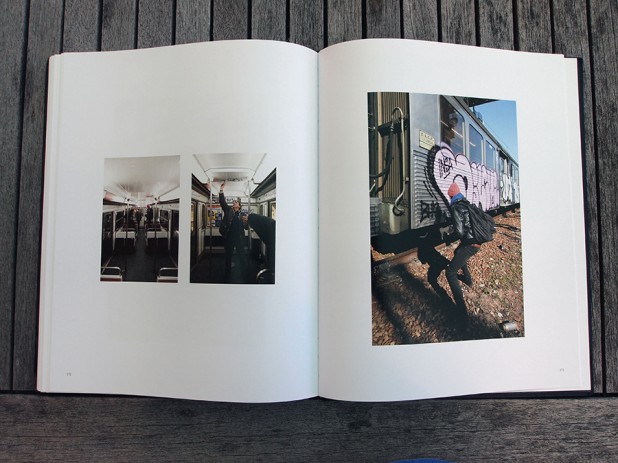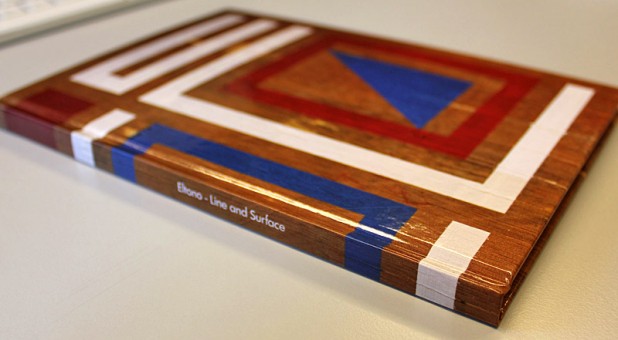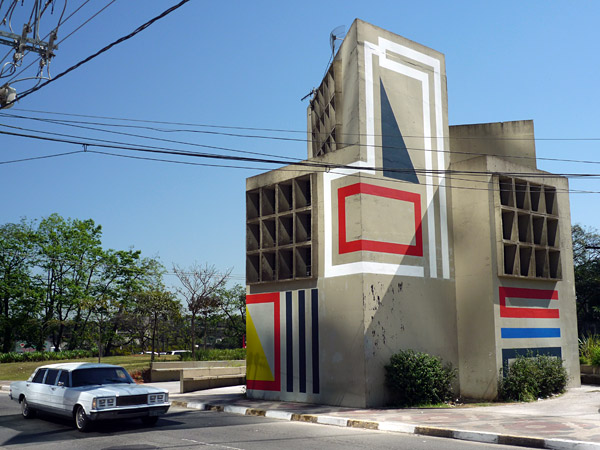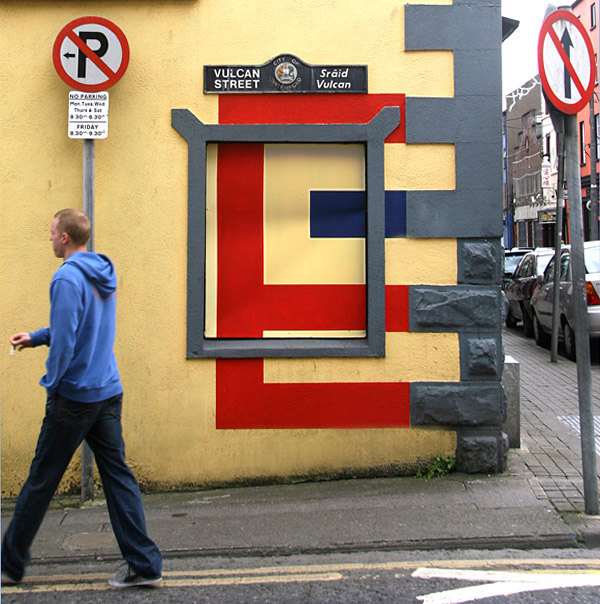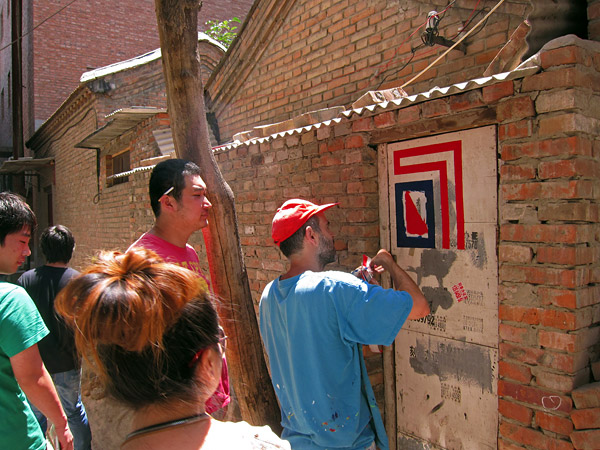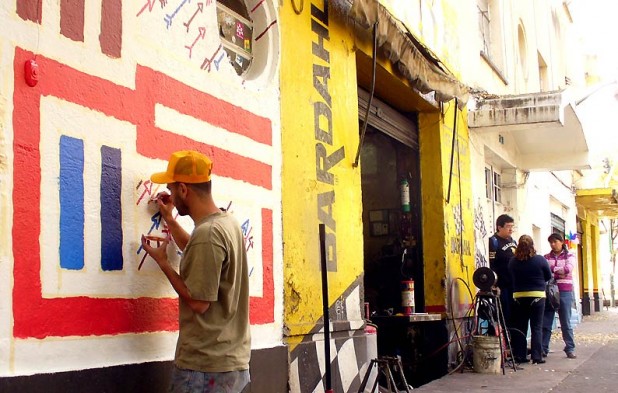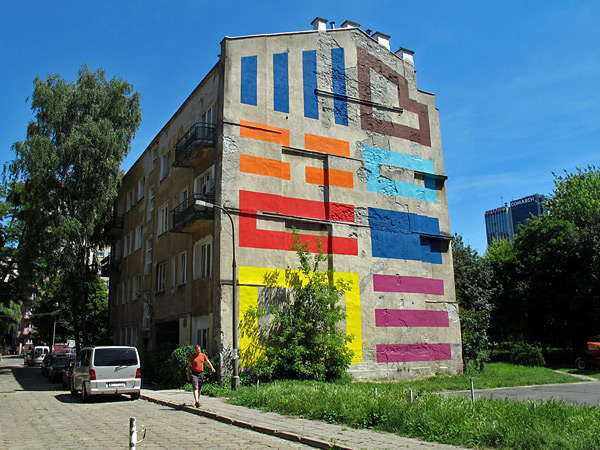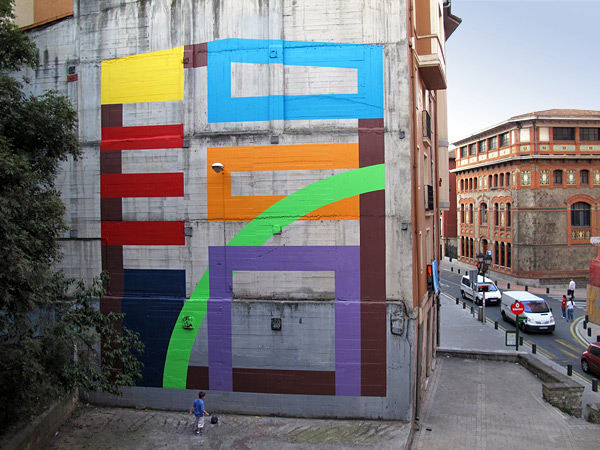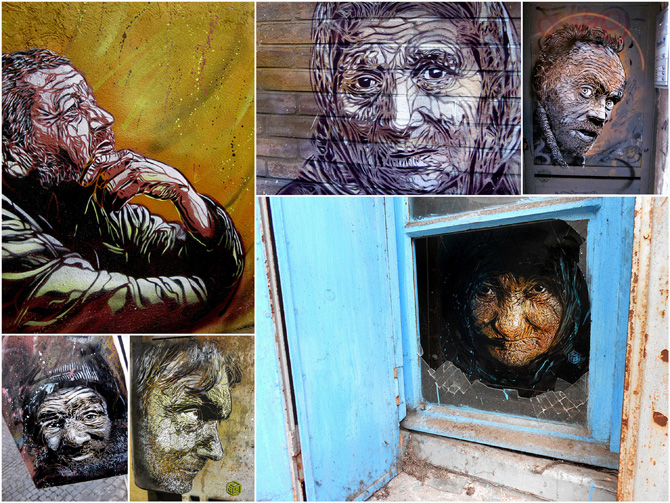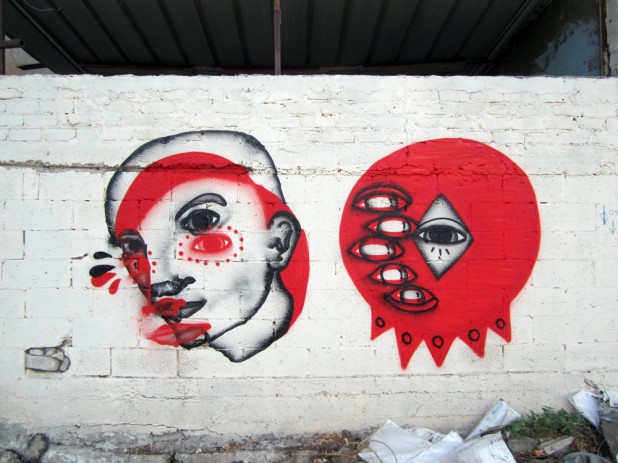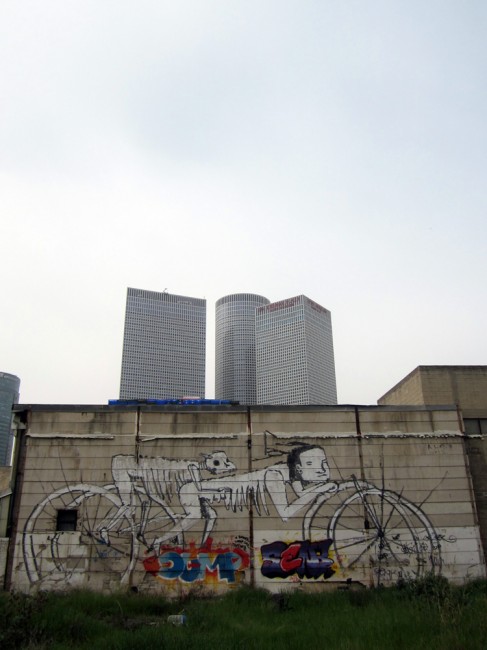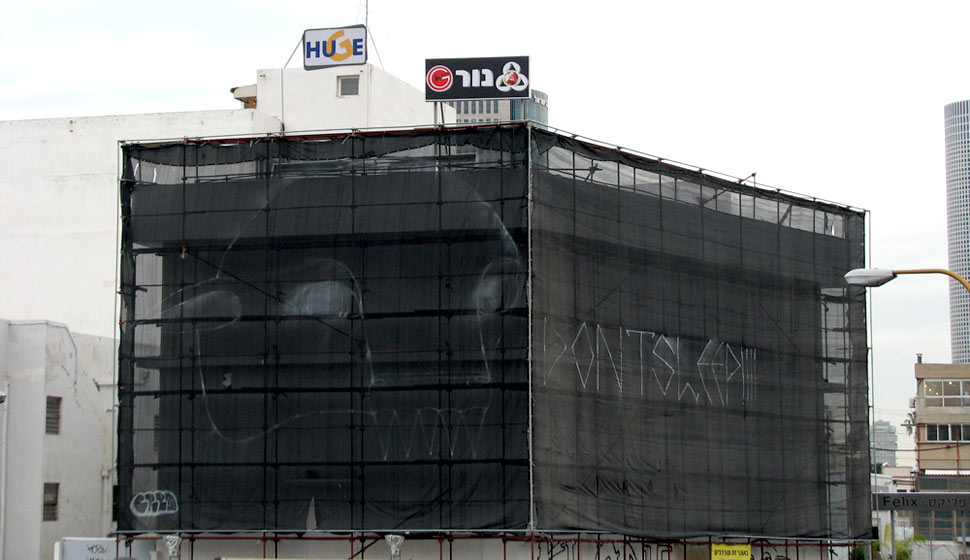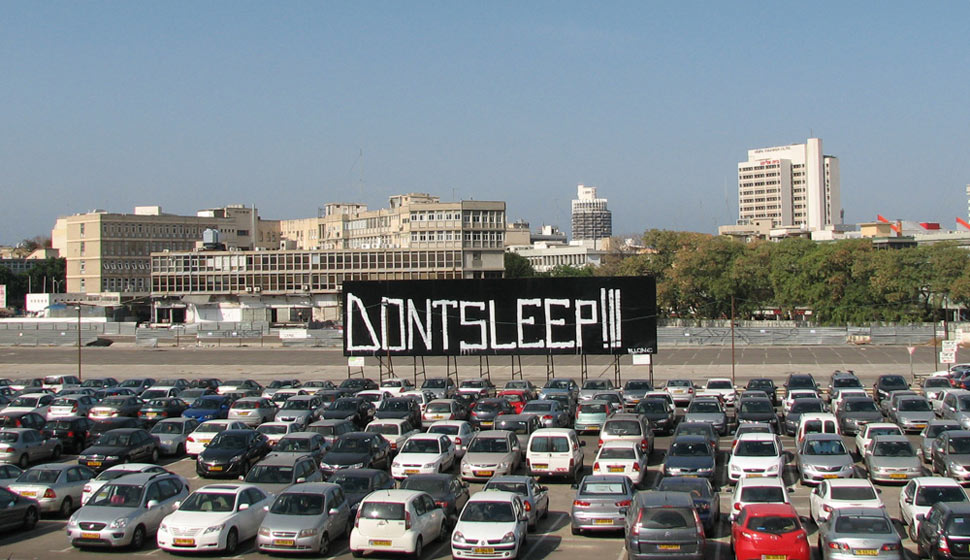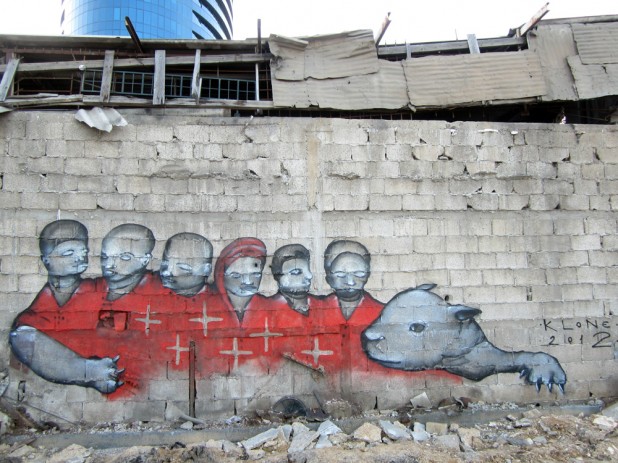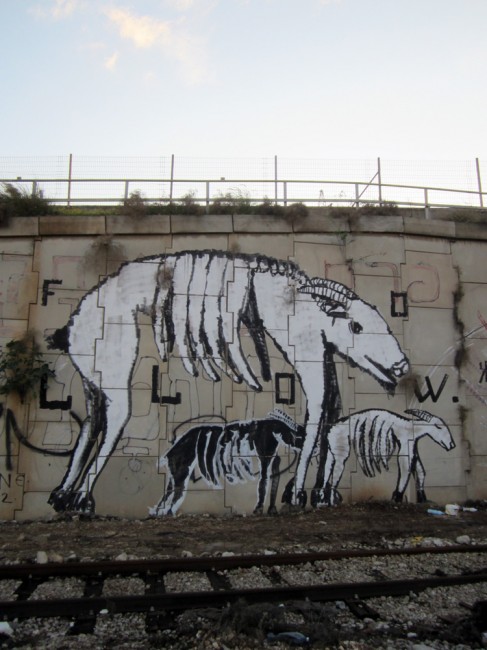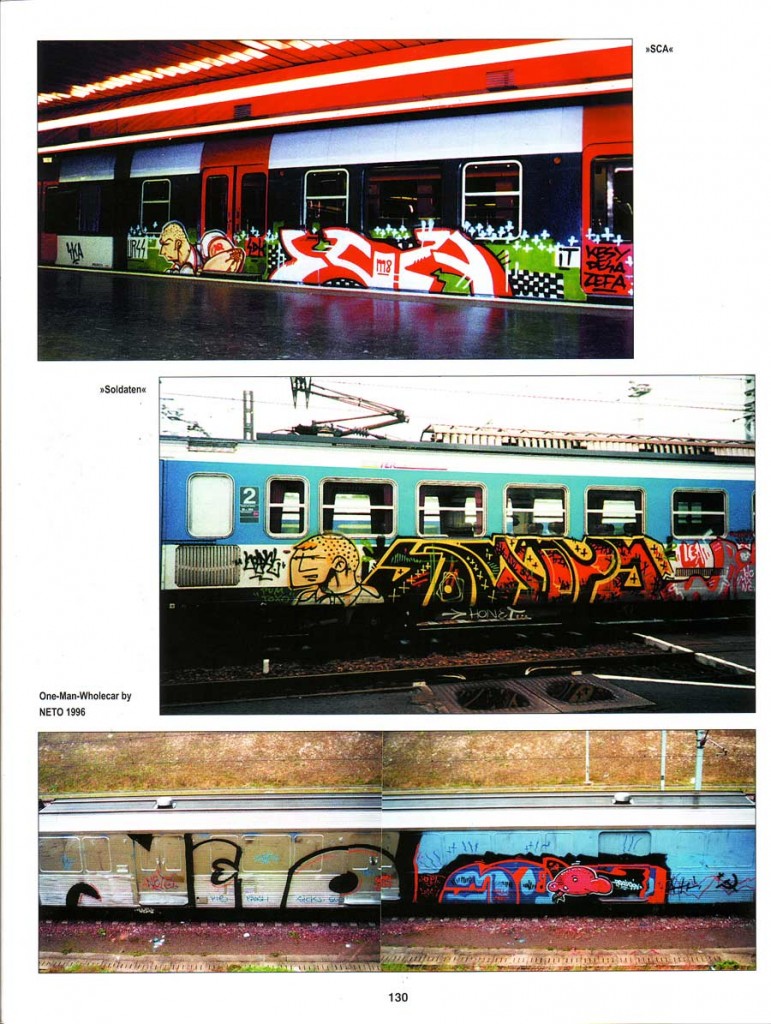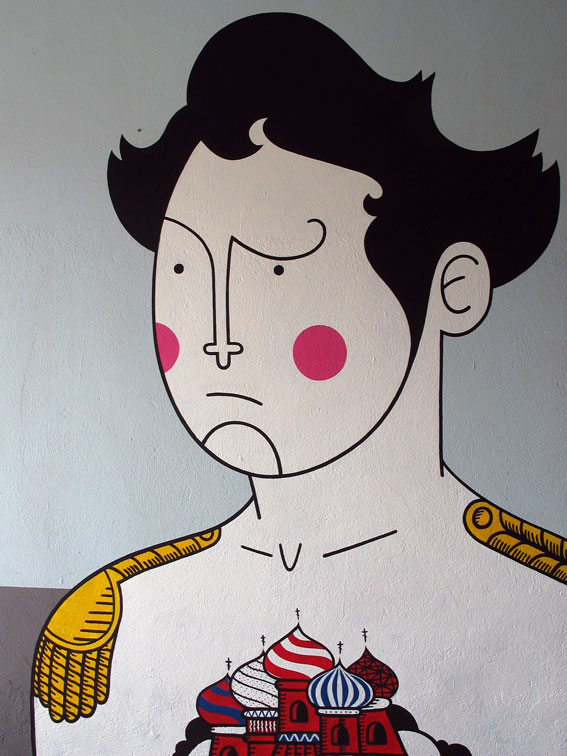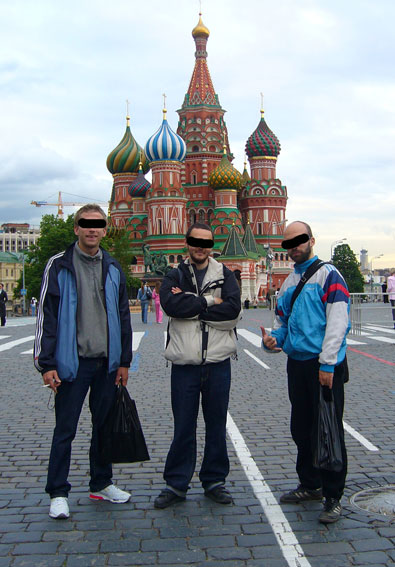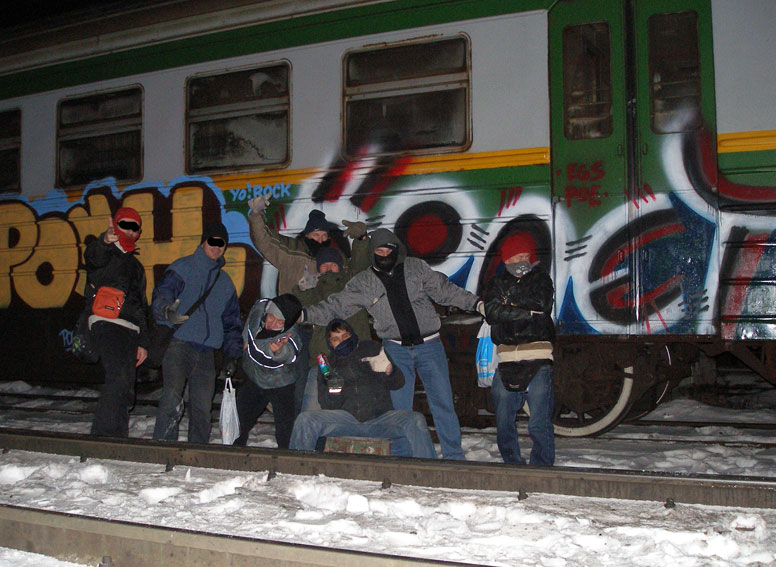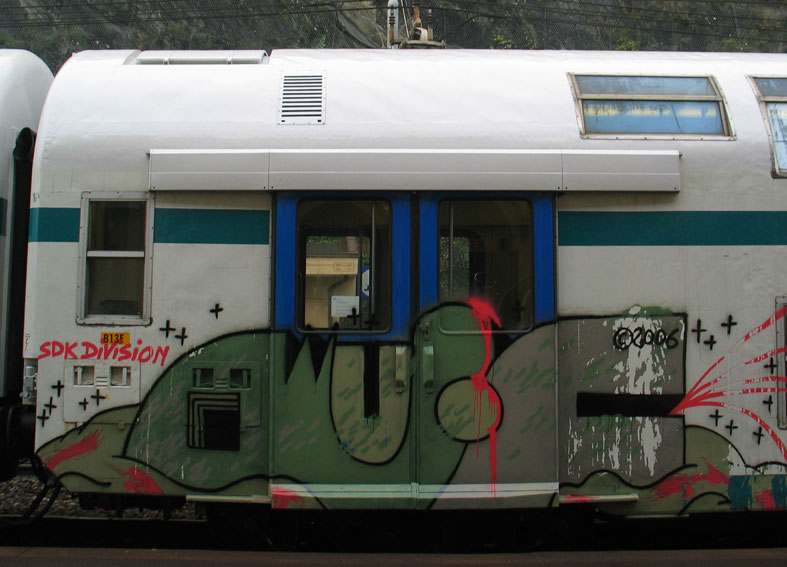This interview is hold by Jens Besser. In 2010 Besser had a stipend of the cultural fund of saxony to met up train painters from all over Europe. Since that time he is in contact with Aris from Italy.
Jens Besser about Aris: “For me personally the works of Aris are a rare unique part of the european street art scene. He doesn’t live in a big city like Berlin or Paris, he lives in a Town in Tuscany. Maybe this is one of the main reasons why he developed an own way of painting especially on freights. As well he was invited to participate in art projects like icone in Modena or City Bilder ( link ) in Dresden. For City Bilder he realized an over 100 meter long mural on the outside of a former tram depot.
This interview features photographies by Aris that show the development of his work – coming from writing going to the “puppets”.I would like to thank a lot Aris for his time on this long interview and hope to see more of his fresh works rolling on and on !”
JB: Hello Aris – please give me an introduction. When did you start painting ? What’s your prefered Name you paint or you sign your works with ?
A: I have been painting since 1993, under the name of Aris mostly. I changed several names, especially in the beginning when I did graffiti. Even the current one has often varied in Aris, Aix, Aiz, Ariz.This allowed me to experiment with letters and then to find my ideal shape. But it was not only a question of form, I also liked the sound, which vaguely sounds like my real name. Now I mainly use Aix and Aris, which helps me distinguish the puppet work (Aris) from the writing (Aix).In any case I don’t sign so much now, never when I do puppets.

“puppets” in 2007
JB: Why and when did you start painting on walls &trains ? When was your first train and what about the feeling you had ? And did anything change since then ?
A: I can still remember a journey to Berlin when I was a kid. I would stare at the walls across the railroad tracks, and think how good it would feel to look at something like that at home. Just after this journey, I began to take a real interest in graffiti. But nobody around me did that, so i decided to involve my friends in what was becoming a passion.
Then I started painting in the street, I had not studied art, drawing or painting at home before. The first things were tags with a marker on the wall, with the crew K3 which later on was joined by other components and we became KNM. For a year or so I just kept doing only tags and pieces on the wall, I wanted to train and become practical, improve my style. I thought I might need a “street school” before moving on to trains.
I do not remember very well the first train, I remember it was exciting, but most of all I remember the surprise of seeing the finished piece and being satisfied.
Well, after almost 20 years of trains something has changed, of course. Now the adrenaline is lighter, I know how to move and I can concentrate on the design, I am more focused on the piece and less distracted by the action … then of course, it depends on the type of action.
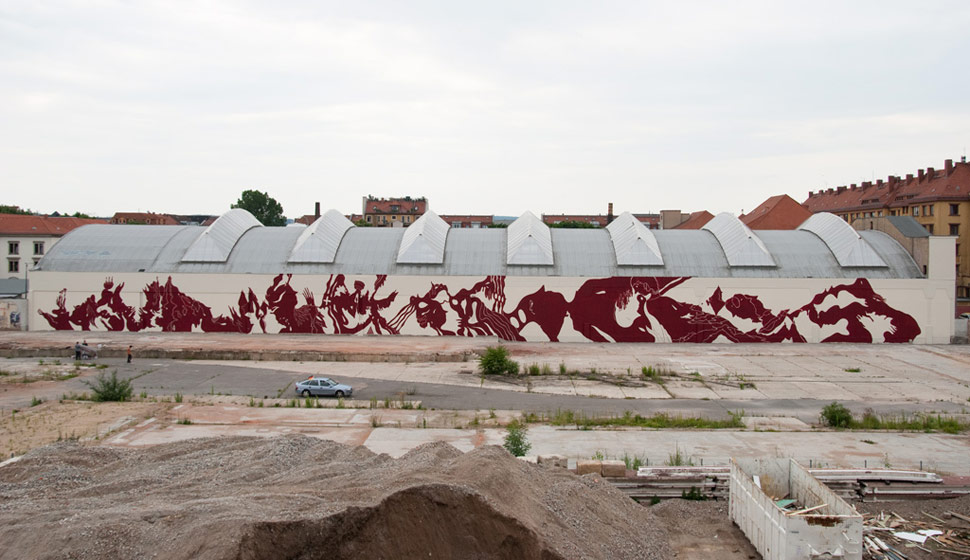
mural for City Bilder in Dresden picture by lucky-cat
JB: You paint walls as well – you’ve been invited to paint some official murals. What differences exits between painting a official wall or an illegal train for you ?
A: I was invited to make official walls. I think there is a huge difference in mood and the way you work. When you are on an official wall, you are given a location, there is no or very slight chance of choosing, you are not very free. You have to work hard on the sketch, be very precise, and sometimes the sketch will be evaluated by the client. I’ve always done what I want with my style, but I’m definitely more influenced when I am on an official wall. Trains are different. First of all, the time: you must start and finish in few hours. I often use approximate sketches or none. I feel freer, free to choose the media, free to experiment. I don’t have to account for them to anyone, I do that for myself.
JB: It ‘s sounds kind of negative how you talk about official walls, that’s why i want to ask you: If you have to choose, what do you prefer – legal or illegal?
A: I prefer to paint in places like old abandoned factories. There is more time and silence then in illegal actions. There’s more freedom than in a commissioned wall.
 Aris live in Tuscany in 2010 – picture by Jens Besser
Aris live in Tuscany in 2010 – picture by Jens Besser
JB: Any inspiring artists, friends , girls , music , things … whatever that made you start painting trains or who inspires you to continue the work … ?
A: The inspiration, the motivation has changed with time. I was initially pushed by the concept of acting as a group, by the connection with my crew, the desire to achieve a style as good as my favourite writers’, by the excitement of the action, by the “team”.
Then I started studying art, I’ve seen many exhibitions, traveled, met several artists, not only writers and street artists. Over the time, the aesthetic pleasure, the constant pursuit of style and shapes, have become the reason to continue.
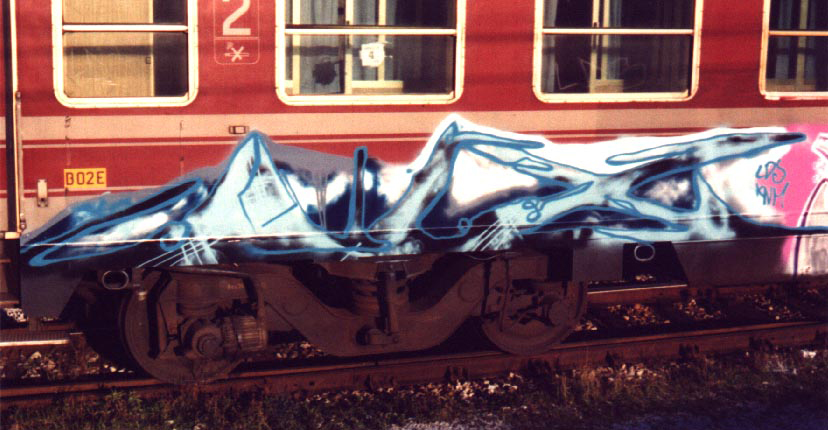
early AIX piece on old italian train done completly with spraypaint
JB: Something about your style, content and technique. How did the way of your paintings develop ? I guess you started with pieces with outlines, but now you don’t have much outlines. You use a lot shapes and shades.
A: In my style I see different points of continuity. In the very first pieces I didn’ t use the outline very often, the pieces were abstract forms evoking letters. The first experiments were in lettering development, which went from simple tag to increasingly abstract writing, arriving to puppets.

Aix-piece featured by “puppets”
JB: Has there been an inspiration from outside that led you to leave lettering to go to figuratives at this time ? Or you were just tired of letters?
A: For many years I made street painting: letters, hardly anything else, and I did not care so much for characters and figures..
At the same time, at home, I would draw characters and things in hundreds, on paper, but they would stay there. I’d never have my two ways of making merged. It happened though, some time after. I was in Spain with some friends, and we were about to paint a wall. A friend of mine was there too, and he suggested that I should use one of my paper characters…
JB: Was it a fluid development from style to puppets ?
A: The process of change has been rather fluid, a bit like a trend wave, with innovations and returns to themes and figures already tried, mixed and then repeated with changes. The first puppets were recognizable figures. This happens every time I try new subjects: for a while, I draw them recognizable and then make them more abstract.

puppets in 2009 on freights
JB: Where does the inspiration for you puppets come from ?
A: My work evolves into formal research, a balance between color, sign, support. The technique evolves too, according to my needs. I used markers with my first tags, then spray with my first pieces. Then I had a long experimental phase where I used any kind of materials: I also glued pieces of glass and mirror on the trains. Today I mostly use tempera and acrylic on walls.
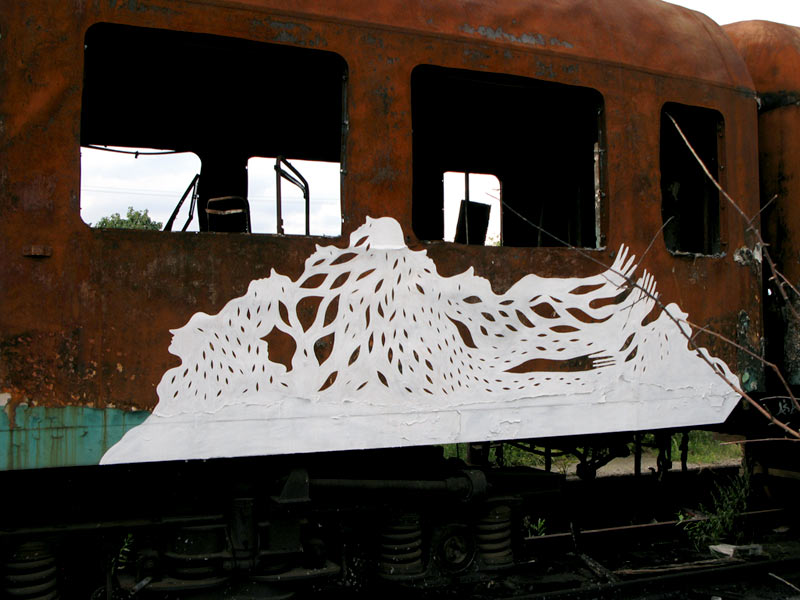
2009 – acrylics on rusted steel
JB: Your works look like painted paper cut works to me – but what kind of sketches do you do ? Paper cuts ? Drawings on paper ? Or even none ?
A: My most recent works are shapes and shadows, stains moved by the irregularity of the surface or through the addition of texture or contrasting colors. In the past I used to paint in black and white a lot, now I’m on wider color ranges.
My work reminds of paper-cut, maybe because I use color to cut out the shapes from the background. My works on paper or plastic with overlapping shapes cropped out generate from this practice. It’s a result of the puppet work and not the opposite. By contrast, drafts are always drawings on paper, where I trace lines representing the outline of the shapes I will draw, which are usually not colored.
JB: How important is the sketch for the final result ? Do you change a lot ? how much does the atmosphere of the yard influence your work ? ( What’s the Difference to Mural paintings ?)
A: The sketch is very important to give me a rather faithful image of what I will get with painting. My shapes generate from a daily drawing practice. Sketches get more and more important as the work surface gets wider. On large surfaces, I need very detailed projects, which allow me to dominate the space in its entirety. Otherwise you risk getting lost in details to the detriment of the composition. By contrast, the smaller is the piece the more I can work in freestyle. Every puppet piece has a different atmosphere around it. Legal frameworks have a very different feel from the illegal.
You cannot be general about yards even, each has its own personality, which is strongly influenced by the surroundings, the geographical environment. Northern Europe yards are often outside the city center, in green areas. The temperature, the texture of the air that you breathe, the light are different from the ones in Southern Italy yards. In winter, colors clot and freeze in the cold.
Some yards require hours and hours of waiting and observation: you have to dodge workers, supervision and cameras. Different materials produce different results too.

2003 – Aix painted with marker on train
JB: Most of the time ( or always ? ) you prefer to paint with brush . This is untypical for painting on trains. Why did you start using brush on a train ? And what does it mean in the way of painting on the train ?
A:I have worked with markers and spray for a long time, and this has made me intolerant to solvents and chemical odors. To continue, I had to find a solution: brush and water painting was a possibility. This technique has many implications when you paint on the trains, though: slow drying time, difficulty in overlay colors, need to check the weather before the action, as water-based paint does not like rain! But this is some advantege too: it forces me to be concise, less reckless, so that my work looks more programmed in the end.
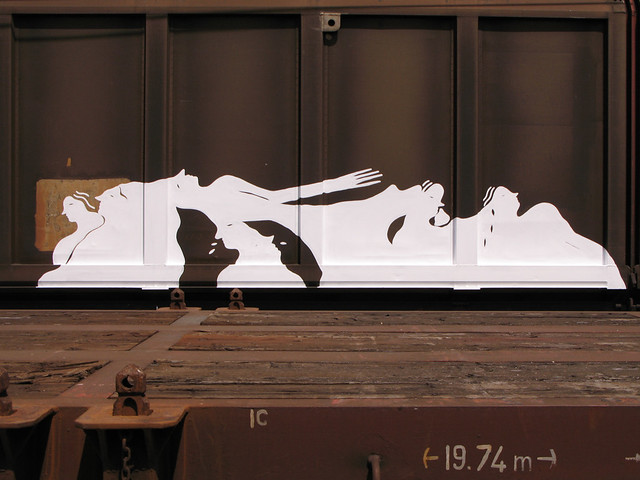
2009 simple work only in one color

2011 – massive work in grey scale
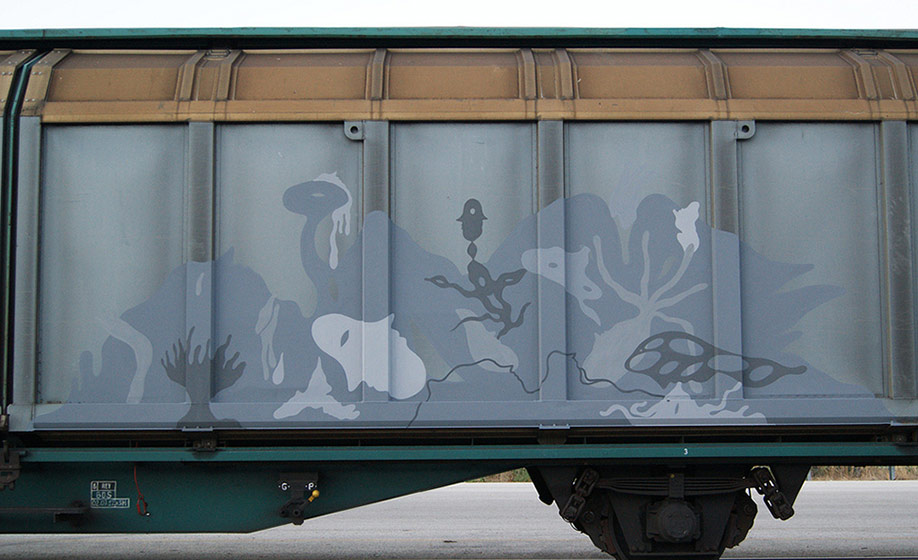
2013 – Aris still paints puppets in well balanced gray scale besides some new colorful works
JB: I appreciate your works especially because they are away from “hypes or trends” . What makes you continue to work in this straight way ? The works you do – Are they Paintings or Drawings ( I see myself as a drawer, i work with lines , not really with color shapes ) ?
A: I think that’s because I artistically grew up far from the fashion scene, which left me the mental space to produce a language of my own. Then, once I developed my style, I went on that way, never straying, never following the “trend”. I think my work, once it is finished, is closer to painting than drawing, full as it is of large masses, fields of color. You could say that looks like collage a little.
JB: Okay you ‘re collagist ;)
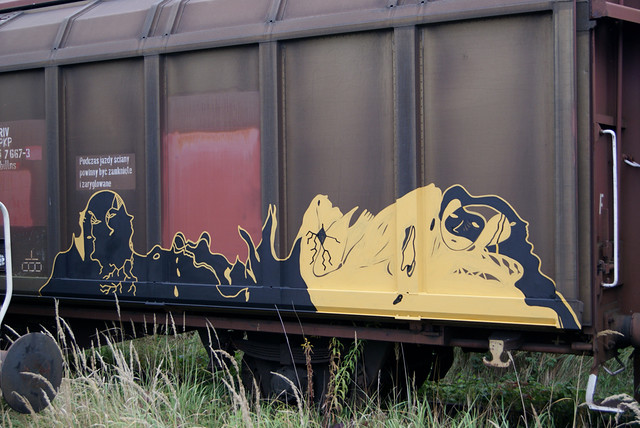
a painted polish freight
JB: What’s your relations to others – hobos, cleaners, companies and “typical” graffiti writers ? In the U.S, hobos paint on freight trains or guys like Other from Canada do paintings on trains and travel with freights. Did you do anything like this ?
A: Relations change according to types of trains and work. When I was doing graffiti, the krew often was with me, yards were more dangerous, we had to quarrel with controllers and to meet the cleaners (sometimes friendly, sometimes not). On parked passenger trains, it was easier to meet someone who tried to sleep inside or spend the whole night there. I usually do the freight alone. It sometimes happens to meet people who live inside trash wagons, but I have never come across a hobo or someone using freight trains to travel. I think this is not common in Europe. You are more likely to meet some pusher who’s taking advantage of the relative quiet of the area..
I have also met maintenance workers: I was already out of the yard but they understood anyway. They were mainly worried about numbers and codes essential to the recognition of the wagons!
JB: That means the freight workers are more relaxed the cleaners and workers of passenger trains ? Is it a reason that you prefer nowadays the freights?
A: Sometimes they are more relaxed sometimes not, but you can never know! I enjoy to work on freight trains because they have large areas, they have always fascinated me, and I like so much the atmosphere and the situation of the yard…and sometimes for working with a roller and brush I need more time.
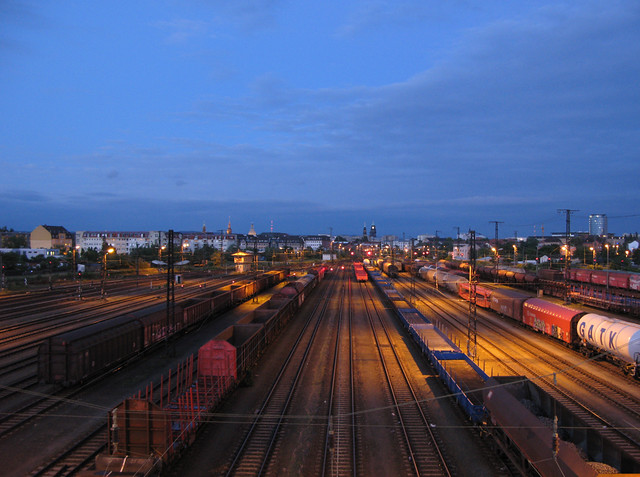
Atmosphere ! The freight yard of Dresden through the lens of Aris.
JB: What do you think about cleaned trains? Did you ever saw some of your painted freights again – somewhere else in europe? Or do you just paint for the photo? Do you hate the Buff?
A: Train cleaning has positive and negative sides. There’s always new place available to paint, but the pieces survive a short time. Freight trains last longer. It happened to see them parked in different yards. They are not so frequently in transit.
Once, I saw a very old panel of mine running, painted 12 or 13 years before.
Since trains are buffed, it is very important to make pictures. That way, pieces will live longer, at least in photos, and we will be able to follow their evolution.
JB: If a photography is the final Work , because the works a buffed anyway, what do you think about the theory that “painting trains is type of art photography” in the way of arranged photography ?
A: ahaha, actually it’s a bit like that, although I think it’s more an effect than a cause.
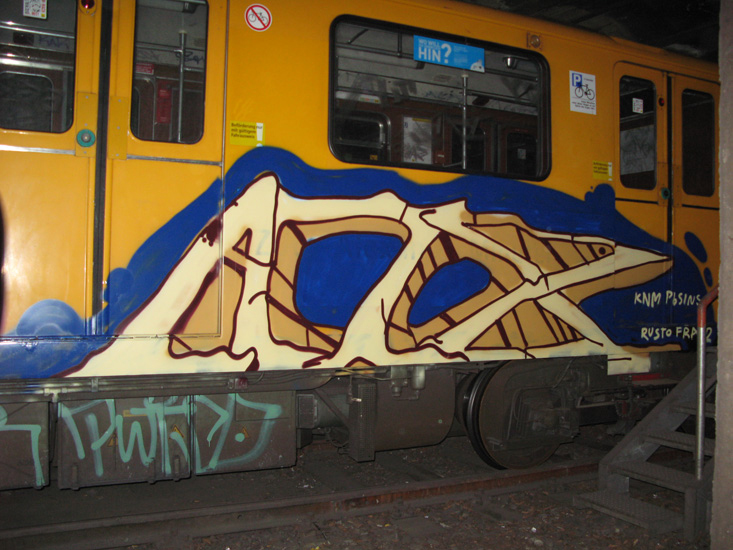
greetings on a Berlin Metro to FRa and Rusto
JB: Do you have anything to do with normal Graffiti writers ? I know that Fra , is one of your old buddies ? What’s your relationship to them and what do you think about their works ?
A: As I said, I started as train writer. My krew -KNM PB’S OK- deeply influenced my style. I have always kept in touch with my crewmates, both in life and actions. I still follow their work very passionately.
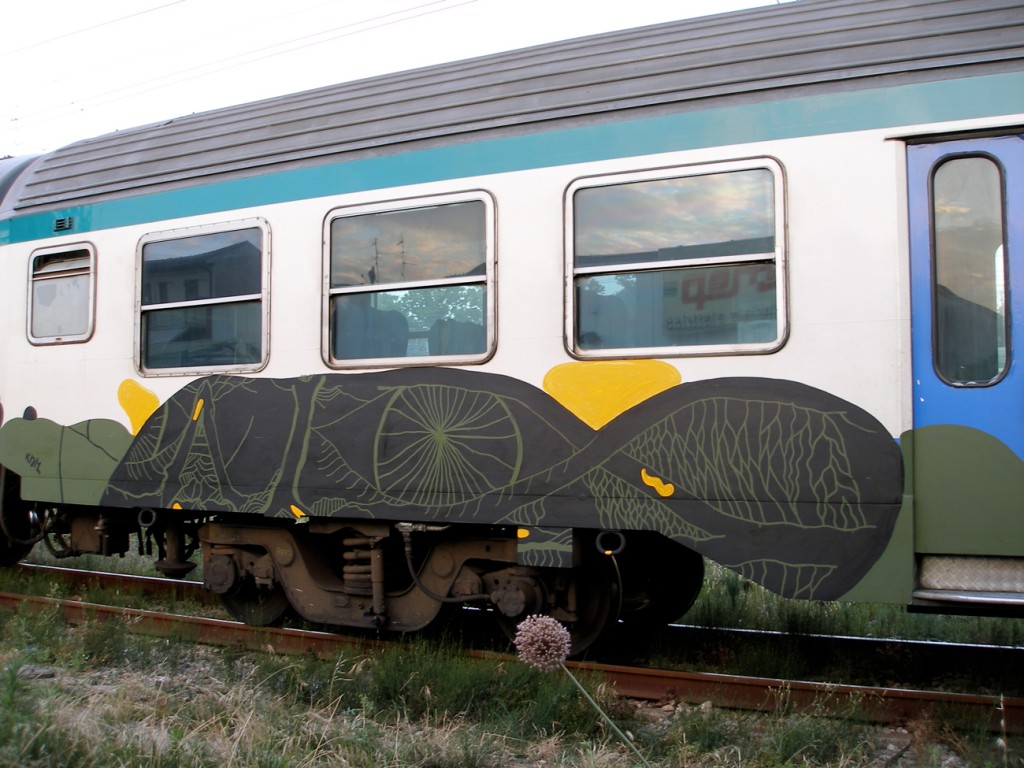
on of the last passengers of Aris
JB: I saw on your flickr-stream only painted freight trains . Don’t you paint any passengers anymore? And why ? What about the action feeling – is there a difference between painting a freight and painting a passenger or a metro ?
A: I haven’t painted passenger trains for four years now. These days, I prefer painting freight trains, so that I can work alone and experiment a lot better, being free from historical and standard references.
JB: What do you think about the american movement of painting freight trains with typical styles?
A: I don’t want to generalize too much, but when you talk about typical style I find it too classic. That’s why, among those who do lettering, I prefer those who carry out research and make a difference through the details.

fresh and colorful work in 2013 by Aris
JB: What do you think about the european movement painting passenger trains or metros, that are cleaned really fast , but well documented on videos and photos ?
A: The need for documentation in contrasting the ephemeral part of graffiti has fostered parallel artistic expression such as photo and video, more and more sophisticated and intriguing stuff. What was initially just plain documentation soon evolved into art. And this led to increasingly performative actions and attention to more articulated and significant processes.
I remember, for example, a video in which the sign on the train is a juxtaposition of the naked body and the paint on the train, I found it very funny. ( I Guess you mean this one )
JB: Thanx for this Interview ! The last words are yours – Something you would like to say ?
A: Thank you! And again thanks to all the crewmates and friends in this adventure!
If you want to stay updated check out Aris flickr account
Aris is recently featured in the show “Coming from the yard – straight out of Verschiebebahnhöfe”
Aris photogallery on ekosystem.org
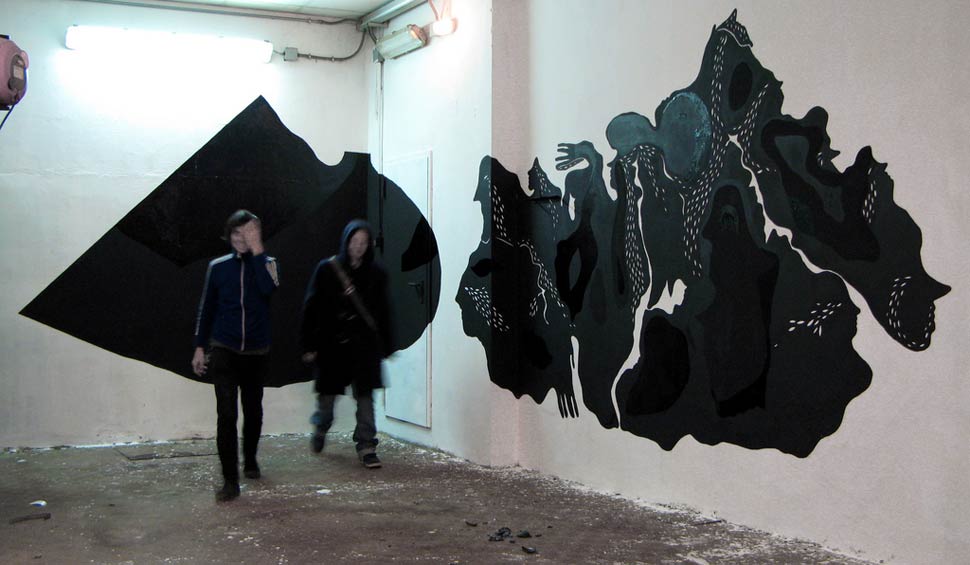
108 and Aris in a show in Firenze

